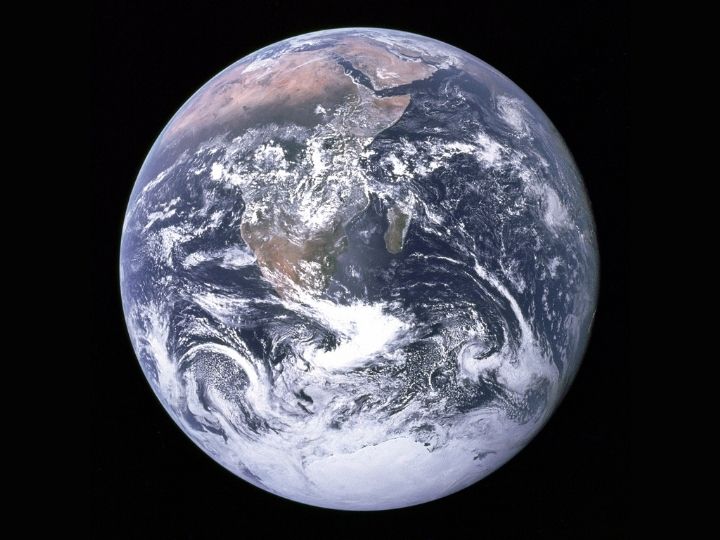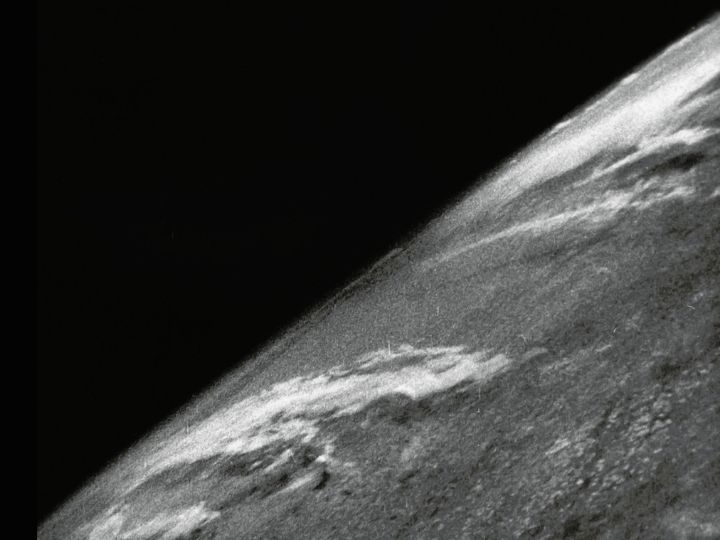The First Photo Of Earth From Space Was Taken Exactly 75 Years Ago. Check It Out
A Nazi rocket had captured the first image of Earth from space on October 24, 1946

New Delhi: Do you know that the first photo of Earth from space was captured 75 years ago? The grainy black-and-white photo was a major milestone in an age when technology was not advanced.
The first photo of Earth from space was captured on October 24, 1946, by a Nazi rocket. The picture shows clouds hovering over a small portion of the Earth's surface, and pitch black space in the background.
Till date, more than 9,00,000 images from space have been captured by NASA astronauts. This photograph taken by a Nazi rocket existed before Ronald Evans captured the iconic Blue Marble picture of Earth in 1972.

How Was The Photograph taken?
A 35 mm film camera fitted in between the fuel tanks of a captured Nazi V-2 rocket had captured the first image of Earth from space. The rocket was launched from White Sands Missile Range.
The launch of this rocket from the New Mexican desert incited the space race, and experimental sciences.

How NASA Rockets Were Inspired By Nazi Rockets
The world's first liquid-fuelled rockets were flown by American physicist Robert Goddard in the 1920s. The Allies, after World War II, discovered that Germans had advanced rocket technology to a great extent with their V-2 rocket.
Michael Neufeld, Senior Curator in the Department of Space History at the National Air and Space Museum, told Inverse that the V-2 rocket has been a failure as a weapon because of being an expensive way to drop a one ton bomb on an enemy city, but was "obviously a technological breakthrough that could herald a new age of either space vehicle or ballistic missiles".
Many V-2 rockets were captured by the United States and the Soviet Union, and the two nations started studying the rockets with the aim to improve them.
The US Army, together with General Electric and the Applied Physics Laboratory and Naval Research Laboratory, which were supported by the US Navy, started equipping the V-2 rockets with scientific instruments and cameras. They began launching the rockets into Earth's upper atmosphere above New Mexico.
The Inverse article also quotes Neufeld as saying that the inability to recover a payload was one of the biggest challenges faced by the US in those days. He explains that the payloads were made to survive the impact of falling into the ground at several 100 miles per hour, by encapsulating them in casings.
In the absence of rocket telemetry and GPS, it was difficult to track the crater created by a camera or an instrument which may have survived the fall.
According to Neufeld, the only thing that gave an approximate location of the impact in those days was radar tracking.
The First Photo Of Earth From Space
The 12th launch of the V-2 rocket was made on October 10, 1946. This was the first space-science experiment conducted using the rocket. The absorption spectrum of ultraviolet light in the upper atmosphere was captured using a solar spectrograph, according to reports.
The V-2 rocket was launched for the 13th time on October 24, 1946. The film camera was made using parts from a B-29 bomber's fire control system. It was fitted into the rocket's mid-section, and captured time-lapse photos. The rocket flew to an altitude of 65 miles.
The V-2 launches were publicised and not kept a secret, unlike later Cold Aerospace development programmes.
The rocket took several images at various altitudes, during its October 24 flight, which were released to the press by November.
The Inverse article mentions that Trans-Lux, a movie newsreel service, called the images, "most sensational newsreel images of all time".
Though some pictures showing the curvature of Earth had been captured by an earlier mission, the Explorer II, the V-2 images are special as they were captured from a height five times the altitude reached by the former mission.
The National Geographic Society funded the Explorer II high altitude balloon mission which reached an altitude of more than 13 miles.
Related Video
Southern Rising Summit 2024: How Important is Self-Awareness? Insights from Anu Aacharya | ABP LIVE
Top Headlines






































